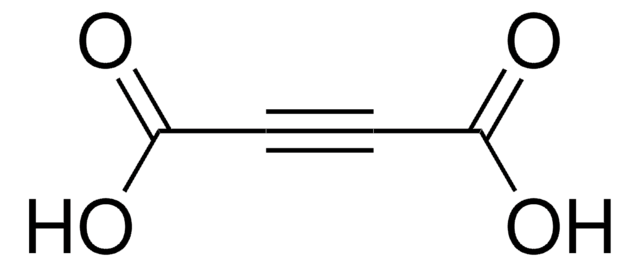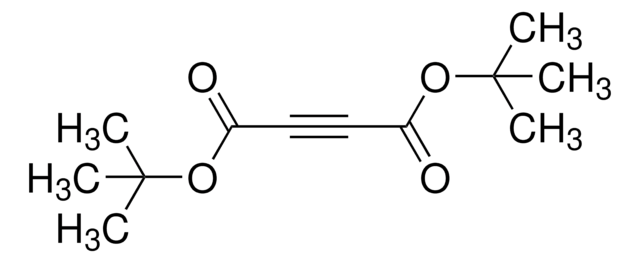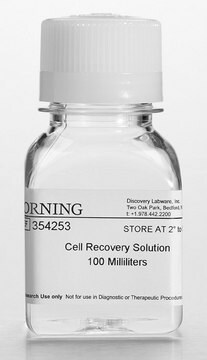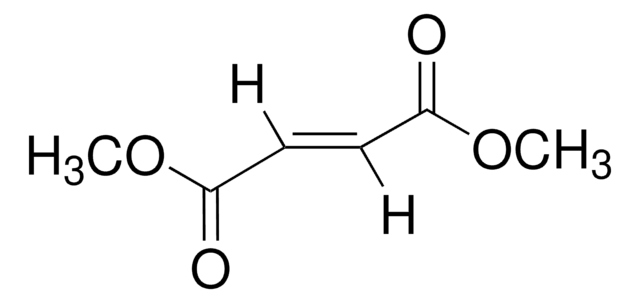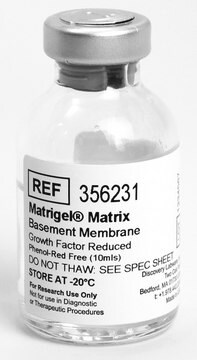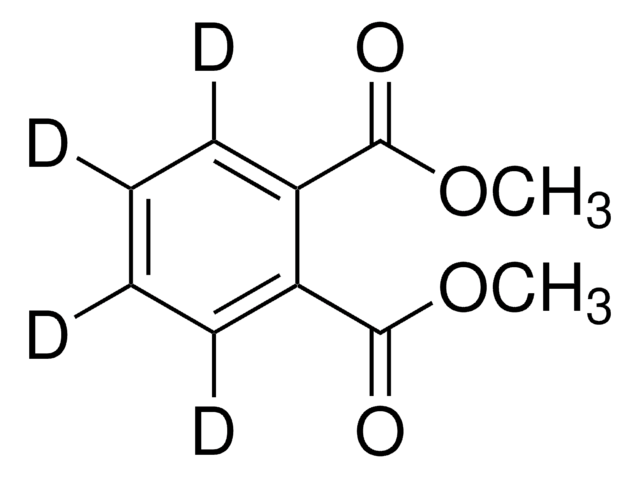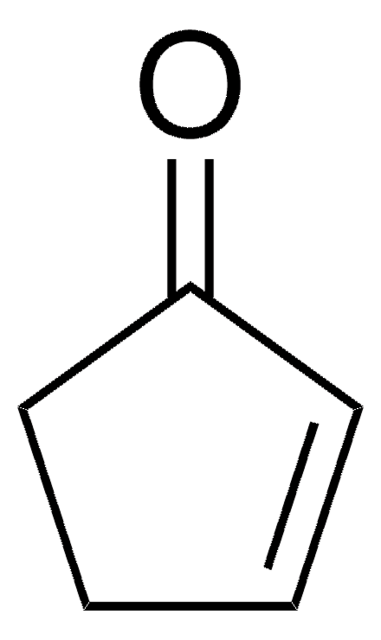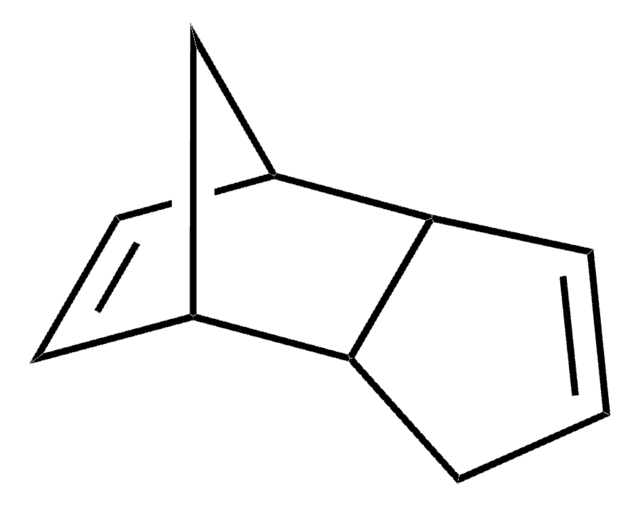Wichtige Dokumente
D138401
Dimethylacetylendicarboxylat
95%
Synonym(e):
Dimethyl-acetylendicarboxylat
About This Item
Empfohlene Produkte
Qualitätsniveau
Assay
95%
Form
liquid
Brechungsindex
n20/D 1.447 (lit.)
bp
95-98 °C/19 mmHg (lit.)
Dichte
1.156 g/mL at 25 °C (lit.)
SMILES String
COC(=O)C#CC(=O)OC
InChI
1S/C6H6O4/c1-9-5(7)3-4-6(8)10-2/h1-2H3
InChIKey
VHILMKFSCRWWIJ-UHFFFAOYSA-N
Suchen Sie nach ähnlichen Produkten? Aufrufen Leitfaden zum Produktvergleich
Allgemeine Beschreibung
Anwendung
Signalwort
Danger
H-Sätze
Gefahreneinstufungen
Acute Tox. 4 Oral - Eye Dam. 1 - Skin Corr. 1B
Lagerklassenschlüssel
8A - Combustible corrosive hazardous materials
WGK
WGK 3
Flammpunkt (°F)
186.8 °F - closed cup
Flammpunkt (°C)
86 °C - closed cup
Persönliche Schutzausrüstung
Faceshields, Gloves, Goggles, type ABEK (EN14387) respirator filter
Hier finden Sie alle aktuellen Versionen:
Analysenzertifikate (COA)
Die passende Version wird nicht angezeigt?
Wenn Sie eine bestimmte Version benötigen, können Sie anhand der Lot- oder Chargennummer nach einem spezifischen Zertifikat suchen.
Besitzen Sie dieses Produkt bereits?
In der Dokumentenbibliothek finden Sie die Dokumentation zu den Produkten, die Sie kürzlich erworben haben.
Kunden haben sich ebenfalls angesehen
Unser Team von Wissenschaftlern verfügt über Erfahrung in allen Forschungsbereichen einschließlich Life Science, Materialwissenschaften, chemischer Synthese, Chromatographie, Analytik und vielen mehr..
Setzen Sie sich mit dem technischen Dienst in Verbindung.
